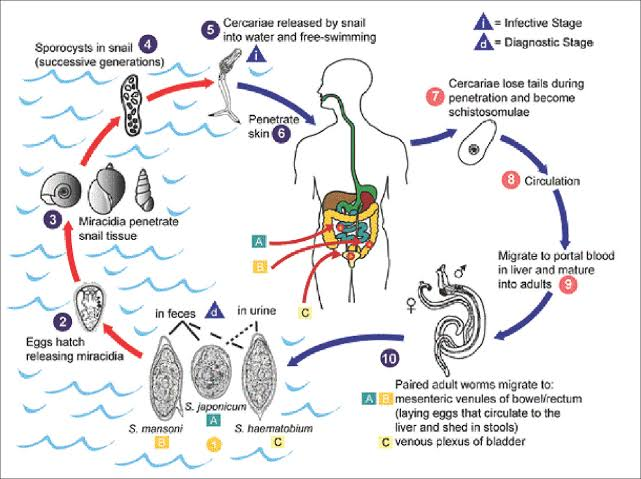Snail fever: Lagos commences treatment in 7 LGAs
The Lagos State government says it has commenced medical intervention in the outbreak of schistosomiasis in seven local government areas of the state with a view to quickly curbing its spread. The intervention will be applied on children between the ages of five and 14 in Ikeja, Ifako-Ijaiye, Amuwo-Odofin, Oshodi-Isolo, Agege, Lagos Mainland and Alimosho […]

The Lagos State government says it has commenced medical intervention in the outbreak of schistosomiasis in seven local government areas of the state with a view to quickly curbing its spread.
The intervention will be applied on children between the ages of five and 14 in Ikeja, Ifako-Ijaiye, Amuwo-Odofin, Oshodi-Isolo, Agege, Lagos Mainland and Alimosho local council and local development areas from Monday December 2 to Sunday December 8, 2019.
The state government had on December 1, 2019, confirmed the outbreak of the disease.
The state’s Commissioner for Health, Professor Akin Abayomi, disclosed that health workers would go round schools, homes and other important places to administer medicine on children in a campaign the state government is collaboration with the Federal Ministry of Health, World Health Organisation (WHO) and Mission to Save the Helpless (MITOSATH).
Schistosomiasis is a snail-borne, water-based parasitic infection caused by blood-dwelling (hence called blood-fluke) trematode worms of the genus schistosoma. It is regarded as a disease of the poor and marginalized and affects approximately 779 million estimated people globally.
The infection is now commonly known as bilharziasis, swimmer’s itch, snail fever, katayama fever, blood fluke, and tsargiyya and atosi aja (dog’s gonorrhea) in Hausa and Yoruba languages respectively.
A study published by Stanford University, USA, listed Nigeria as having the highest number of schistosomiasis cases in the world.
Also, in an epidemiological survey by I. S. Akande and A. A. Odetola, approximately 600 million people in tropical and sub-tropical countries are at risk of the disease, and of those infected, 120 million are symptomatic, with 20 million having severe manifestations.
Presently, an estimated three million Nigerian children aged between five and 14 years are infected.
The Executive Director, MITOSATH, Dr Francesca Olamiju, said that the disease commonly affect school-age children who come into contact with it during their daily chores or at play in activities involving fresh water.
Abayomi mentioned symptoms of the disease to include abdominal pain, diarrhoea, bloody stool or blood in the urine, with the possibility of death in the case of chronic schistosomiasis.
Akande and Odetola explained in their research that people can contact the disease through shallow pools, excavations, small earth dam, river and marshes, irrigation channels, reservoirs and lakes. Males were noticed to be more infected than females.
The Commissioner stressed the need for the urgent medical intervention, “We have no excuse to neglect these diseases because simple interventions put in place can eliminate the pathogens.
“By taking care of our hygiene, nutritional status, as well as putting simple things in place, will go a long way in eradicating the disease. That is why the present administration has put in place the one-health approach to achieve optimal health outcomes.”
All efforts to contact the state’s Epidemiologist, Dr Ismail Abdus-Salam, and the Programme Officer, Mr Jenrola, to comment on the matter proved abortive.
